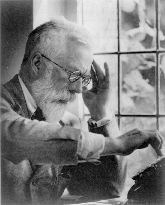|
|
|
SCIENTIFIC PROGRAMS AND ACTIVITIES |
|||||||||||||||||||||||||||||||||||||||||||||||||||||||||||||||||||||||||||||||||||||||||||||||||||||||||||||||||||||||||||
| January 13, 2025 |
|
||||||||||||||||||||||||||||||||||||||||||||||||||||||||||||||||||||||||||||||||||||||||||||||||||||||||||||||||||||||||||||
Overview
This 2-day workshop will focus on the mathematical and statistical modelling of the spread of biological and physical processes in forests. Individuals who have studied insect infestations in forests will be invited as well as researchers into the mechanisms underlying the spread of forest fires. In particular, we will learn from specialists in Mountain Pine Beetle as well as Spruce Budworm. In the past two years, there has been a wave of inter-disciplinary
research activity involving mathematicians and statisticians The present workshop will build on the earlier successes. While the earlier workshops were fairly broadly based in forest ecology and forest fire science, our goal for this workshop is to have a somewhat more narrow focus: spread modelling -- of fire and of pests. The forest fire research community has made steady progress over the past four decades, in increasing our understanding of the nature of forest fires. Mathematical models for predicting fire occurrence have been developed. Deterministic spread models are being implemented for planning purposes and for use in computer simulations to aid in prediction of the future behavior of existing and potential fires. Such models are used in conjunction with queueing models in the strategic management of fire-fighting resources such as aircraft and fire fighters. Although much has been learned about the interactions of weather and fuel-types and their effects on fire spread, and intensity a large number of questions remain. For example, how can jump-fires ignited by burning bark and other firebrands carried by the wind, in advance of a spreading fire, be modelled as a stochastic process? How can the fire hazard in particular areas be estimated reliably? What are the potential impacts of climate change on fire regimes and fire management systems? We plan to have researchers involved with the Prometheus Fire Spread
model at this workshop. There are several mathematical issues connected
with this model and its implementation which need to be addressed.
A level set approach has been suggested as an alternative, and details
on this alternative will be considered at this workshop. Incorporating
randomness into Prometheus is another major goal; the possibilities
will be laid out at this workshop. It should be noted that Prometheus
was featured as one Other stochastic models for fire spread will also discussed, including interacting particle systems. A session on wind modelling is also envisioned. A director of Western's Boundary Layer Wind Tunnel will be present to discuss models for windborne debris. Ecological effects of these kinds of disturbances will also be considered. Interactions between fire and ecology will be discussed. Models of the spread of insects through forests will also be considered. Here, spatial statisticians play a major role. In particular, Markovian mixed effects models have been shown to be an effective way of modelling outbreaks such as that of the mountain pine beetle and spruce budworm. Program
Outline
|
|||||||||||||||||||||||||||||||||||||||||||||||||||||||||||||||||||||||||||||||||||||||||||||||||||||||||||||||||||||||||||||
| Fullname | University Name |
| Eberl, Hermann J. | University of Guelph |
| Perera, Ajith | Ontario Ministry of Natural Resources |
| Picka, Jeffrey | University of New Brunswick |
| Babak, Petro | University of Alberta |
| Belkine, Anna | Simon Fraser University |
| Bose, Chris | University of Victoria |
| Braun, W. John | University of Western Ontario |
| Bryce, Robert | Brandon University |
| Cui, Wenbin | Ontario Forest Research Institute |
| Cumming, Steve | Université Laval |
| Davies, Katherine | University of Western Ontario |
| Dean, Charmaine | Simon Fraser University |
| Esterby, Sylvia | University of British Columbia Okanagan |
| Fauria, Marc Macias | University of Helsinki |
| Fleming, Rich | Natural Resources Canada |
| Garcia, Tanya | University of Neuchatel |
| Gibos, Kels | University of Toronto |
| Gould, James S. | Ensis-CSIRO Forest Biosecurity and Protection |
| Guichard, Sylvain | Ensis- CSIRO Forest Biosecurity and Protection |
| Ivanoff, B. Gail | University of Ottawa |
| James, Patrick | University of Toronto |
| Johnson, Edward A. | University of Calgary |
| Kidnie, Susan | University of Toronto |
| Kopp, Greg | University of Western Ontario |
| Kulperger, Reg | University of Western Ontario |
| Macdonald, Colin | Simon Fraser University |
| Martell, David | University of Toronto |
| McAlpine, Rob | Ministry of Natural Resources |
| McRae, Doug | Natural Resources Canada |
| Miller, Craig | University of Western Ontario |
| Ong, Benjamin | Michigan State University |
| Quince, Fletcher | University of Toronto |
| Régničre, Jacques | Laurentian Forestry Centre |
| Richardson, Mary Jane | University of Guelph |
| Shore, Terry | Pacific Forestry Centre |
| Smith, Bruce | Dalhousie University |
| Song, Bo Serena | Clemson University |
| Tolhurst, Kelvin | University of Melbourne |
| Tymstra, Cordy | Alberta Sustainable Resource Development |
| Woolford, Doug | University of Toronto |
| Wotton, Mike | University of Toronto |
| To Be Confirmed | |
| Cooke, Barry | Pacific Forestry Centre |
| Creed, Irena | University of Western Ontario |
| Field, Robert | University of Toronto |
| Lii, Keh-Shin | University of California, Riverside |
| Stafford, James | University of Toronto |
| Stanford, David | University of Western Ontario |
| Taylor, Steve | Canadian Forest Service |
| Viveros-Aguilera, Román | McMaster University |
.






